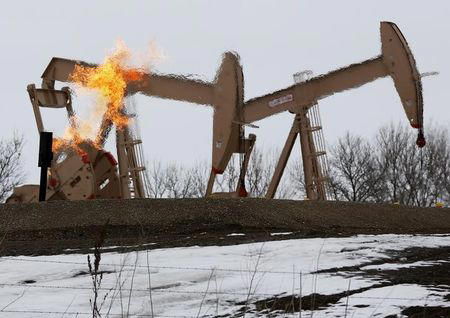Oil prices declined sharply in Asian trading on Tuesday, reaching their lowest levels since mid-June. This drop in prices is largely driven by mounting expectations of an oversupply in the oil market and persistent uncertainty surrounding global demand. Despite recent efforts by China, the world’s largest oil importer, to stimulate its economy through a surprise interest rate cut, this measure appears insufficient to significantly boost market sentiment.
Price Movements and Forecasts
Brent crude oil futures, which are a global benchmark for oil prices, fell by 0.2% to $82.26 per barrel. Similarly, West Texas Intermediate (WTI) crude futures, the U.S. benchmark, also declined by 0.2% to $77.20 per barrel by 20:58 ET (00:58 GMT). The decline reflects growing concerns over an oversupply in the market and weaker demand projections.
Morgan Stanley analysts have projected that the oil market will transition into a surplus by 2025. Their forecast suggests that oil prices will likely settle in the mid-to-high $70s range in the future. Although the market is currently experiencing some tightness, the analysts expect it to reach a state of equilibrium by the end of this year. This anticipated surplus is attributed to a combination of factors, including decreasing seasonal demand and a projected increase in global oil production. Despite this long-term forecast, Morgan Stanley expects oil prices to rise to $86 per barrel by the end of the third quarter, indicating a potential for short-term price recovery.
Demand Uncertainty and Economic Indicators
The global demand for crude oil remains uncertain amid signs of a cooling economic environment. High interest rates have exerted pressure on economic growth worldwide, and doubts about China’s economic recovery have further complicated the outlook. Although China recently implemented an unexpected cut to its benchmark interest rates to support growth, analysts argue that the reduction is too modest to have a substantial impact on market sentiment.
Additionally, the Third Plenary Session of the Chinese Communist Party, known as the Third Plenary, offered limited information on potential stimulus measures from Beijing. This lack of clarity contributes to ongoing concerns about the Chinese economy’s ability to drive global oil demand. China’s economic performance in the second quarter also fell short of expectations, exacerbating fears about weaker future oil demand.
Geopolitical and Political Developments
Geopolitical factors are also influencing the oil market. Traders are closely monitoring developments in the Israel-Hamas conflict. Recent reports indicate that Israel is expected to resume ceasefire talks this week, but military actions continue in Gaza. Such geopolitical uncertainties often impact oil markets due to potential disruptions in supply or changes in regional dynamics.
In the U.S., political developments are adding another layer of uncertainty. President Joe Biden’s announcement that he will not seek reelection and his endorsement of Vice President Kamala Harris as the Democratic presidential candidate have shifted the political landscape. Current polling shows both Biden and Harris trailing behind Republican nominee Donald Trump. Trump has indicated that, if elected, he would increase U.S. oil production, which could potentially affect global oil supply dynamics.
Overall, the combination of these economic, geopolitical, and political factors continues to create a volatile environment for oil prices, as markets struggle to navigate the complex interplay of supply, demand, and policy changes.
